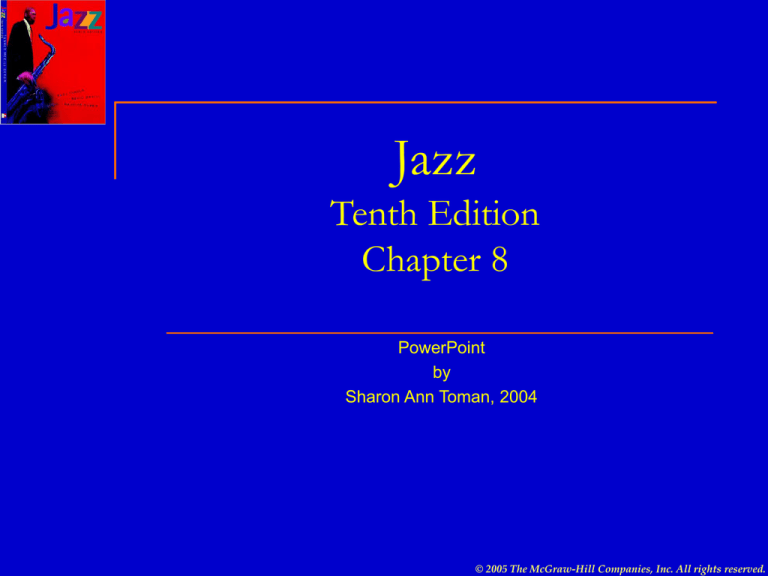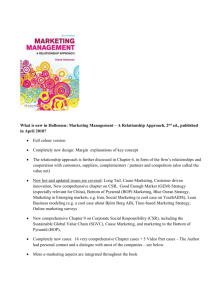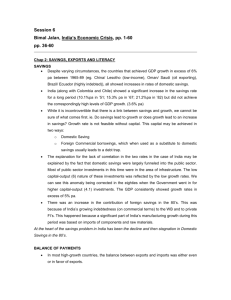
Jazz
Tenth Edition
Chapter 8
PowerPoint
by
Sharon Ann Toman, 2004
© 2005 The McGraw-Hill Companies, Inc. All rights reserved.
Bop
2
Bop jazz was sometimes called bebop or
rebop because players sang the words bebop
or rebop
Chapter 8 - Bop
© 2005 The McGraw-Hill Companies, Inc. All rights reserved.
The Shift to Bop
3
Bop became the 1st style of jazz that was not
used for dancing
Bop took on the complexity that required
players to extend their former playing
knowledge and technique
Chapter 8 - Bop
© 2005 The McGraw-Hill Companies, Inc. All rights reserved.
The Shift to Bop
4
Bop was fast, demanding execution on
individual instruments
Today…Bop is the mainstream of jazz style,
yet it was not accepted by the jazz
community at the time of its emergence
Chapter 8 - Bop
© 2005 The McGraw-Hill Companies, Inc. All rights reserved.
The Shift to Bop
5
Bop players turned to small combos
Bop did not “begin” at any one place or at
any one time
Chapter 8 - Bop
© 2005 The McGraw-Hill Companies, Inc. All rights reserved.
Developing Mainstream and the Jazz Canon
6
Canons exist for all musics
Canons become codified or formalized
historically for those that gain a general
consensus as being worthy
Bop was the era from which a majority of our
canon’s jazz giants emerged
Chapter 8 - Bop
© 2005 The McGraw-Hill Companies, Inc. All rights reserved.
Developing Mainstream and the Jazz Canon
Changes that occurred during this period set
the framework for developing jazz
mainstream
7
Improvisation was a valued component of the jazz
expression
Chapter 8 - Bop
© 2005 The McGraw-Hill Companies, Inc. All rights reserved.
Bop Arranging
Notation for bop bands were usually confined
to unison lines for melodic instruments
Standard format of Bop consisted of:
8
1st chorus in unison
2nd chorus improvised followed by…
3rd chorus in unison
Chapter 8 - Bop
© 2005 The McGraw-Hill Companies, Inc. All rights reserved.
Musical Expansion
Greater freedom of expression…
Bop players used:
Bop creates excitement by fast tempos, and players
accent the note between beats
9
Extended harmonies (like 9th, 11th, and 13th chords)
Extended harmonies resulted in complex harmonies with a
fresh chord sound
1 and 2 and 3 and 4 and
Chapter 8 - Bop
© 2005 The McGraw-Hill Companies, Inc. All rights reserved.
Musical Expansion
10
Tension in the music was created by tonal
clashes (unusual harmonies)
And fast tempos with complex rhythms
Chapter 8 - Bop
© 2005 The McGraw-Hill Companies, Inc. All rights reserved.
Musical Expansion
One of the major changes that occurred
during the bop era was repertoire
11
The building was accomplished mainly by using the
chords of a standard tune as the framework on which to
compose a new melody
Chapter 8 - Bop
© 2005 The McGraw-Hill Companies, Inc. All rights reserved.
Musical Expansion
12
Bop players changed harmonies, melodies,
and rhythms
And Bop players even changed phrasing
from neat symmetrical phrases to phrases
that seemed uneven and unnatural compared
to earlier jazz
Chapter 8 - Bop
© 2005 The McGraw-Hill Companies, Inc. All rights reserved.
Bop Rhythm Section
13
Drummer used bass and snare drums mainly
for accents/punctuations
Drummer played an eighth-note rhythms on
the top cymbal
The more spontaneous punctuations on the
bass drum were called bombs
Chapter 8 - Bop
© 2005 The McGraw-Hill Companies, Inc. All rights reserved.
Bop Rhythm Section
Piano player changed from 4/4 steady
rhythm to syncopated chordal punctuations
14
These chordal punctuations were to designate
chord changes and add excitement to the music
Chapter 8 - Bop
© 2005 The McGraw-Hill Companies, Inc. All rights reserved.
Bop Rhythm Section
15
Guitar (amplified) became a melody
instrument and took the place of the trumpet,
saxophones and others
String Bass maintained a steady rhythmic
pulse and an interesting bass line (“walking
bass”)
Chapter 8 - Bop
© 2005 The McGraw-Hill Companies, Inc. All rights reserved.
Roy Eldridge (1911-1989)
Trumpet player
Played with Fletcher Henderson in 1936
Fiery style of playing
Virtuosic trumpet technique
16
Use of the extreme upper register of the trumpet
Featured with bands like Gene Krupa and Artie
Shaw
Chapter 8 - Bop
© 2005 The McGraw-Hill Companies, Inc. All rights reserved.
Dizzy Gillespie (1917-1993)
17
Great trumpet player
Modeled his playing style after Eldridge
Arranger/composer
The period from 1944 to 1947 was noted for the great jazz
groups that worked in the clubs on 52nd Street in NYC
Where Dizzy formed the 1st actual bop band
Highly regarded all over the world for his contributions to modern
jazz trends
Chapter 8 - Bop
© 2005 The McGraw-Hill Companies, Inc. All rights reserved.
Charlie Parker (1910-1955)
18
Called “Yardbird” or simply “Bird”
Alto saxophonist
Credited as an originator of bebop
Chapter 8 - Bop
© 2005 The McGraw-Hill Companies, Inc. All rights reserved.
Charlie Parker (1910-1955)
19
He used higher harmonies of chords as
structures to improvise new melodies
He produces a rich, expressive tone and
rhythmic freedom in his phrasing
Parker was one of the rare musicians who
could play slow blues very well but also
comfortable at extremely fast tempos
Chapter 8 - Bop
© 2005 The McGraw-Hill Companies, Inc. All rights reserved.
Bud Powell (1924-1966)
20
Classical trained pianist
An important pioneer in bop piano
Recorded many solo albums
Creative style and approach of piano playing
Creative approach to developing melodies and
rhythms
Chapter 8 - Bop
© 2005 The McGraw-Hill Companies, Inc. All rights reserved.
Charlie Christian (1919-1942)
21
Revolutionized the concept of jazz guitar playing
Excellent guitarist
Christian took the role of the guitar from a rhythm instrument
to a solo melody instrument equal to other instruments
Pioneered the use of the amplifier as early as 1937
Played and made recordings with Benny Goodman, Duke
Ellington and others big names
Chapter 8 - Bop
© 2005 The McGraw-Hill Companies, Inc. All rights reserved.
Jimmy Blanton (1918-1942)
22
1st greatest Bassist of the jazz era
Played melodies that belonged to the bass
Playing style rhythmically supported the music
He laid the foundations for all bass players who
followed
He would keep the pulse for the whole combo while
using new and advanced chords
Chapter 8 - Bop
© 2005 The McGraw-Hill Companies, Inc. All rights reserved.
Thelonious Monk (1917-1982)
23
Pianist and composer
Had a major influence on jazz
Unique compositional and improvisational
style
Wrote more than 70 jazz compositions
Chapter 8 - Bop
© 2005 The McGraw-Hill Companies, Inc. All rights reserved.
J.J. Johnson (1924-2001)
24
Trombonist
Paved the path for trombonist in the bop style
Smooth and clean style of playing
Became a leader influencing all trombonists
to follow
Chapter 8 - Bop
© 2005 The McGraw-Hill Companies, Inc. All rights reserved.
Billy Eckstine (1914-1993)
25
Singer and Bandleader
One of the most distinctive of all ballad singers
Important figure in the history of jazz because of his
commitment to bebop
His singing style contained an exaggerated vibrato
1st black singer to achieve lasting success in the pop
mainstream
Chapter 8 - Bop
© 2005 The McGraw-Hill Companies, Inc. All rights reserved.
Stan Kenton (1911-1979)
26
Piano, Vocal and Bandleader
Influential pioneer in jazz
Recruited exceptional instrumentalists
His band arrangements required high quality
playing
Chapter 8 - Bop
© 2005 The McGraw-Hill Companies, Inc. All rights reserved.
Conclusion…
27
Bop did not have a chance to emerge
gradually for public listenings as the other
jazz styles had
After WWII, bop started to be heard by more
of the public
Chapter 8 - Bop
© 2005 The McGraw-Hill Companies, Inc. All rights reserved.






